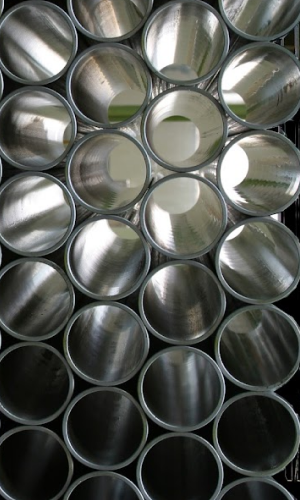a) by reducing the corrosive activity of the medium by removing active substances (e.g. oxygen or aggressive impurities) or by introducing inhibitors to the medium, i.e. substances inhibiting the corrosive process;
b) using electrochemical methods, i.e. giving the protected object an appropriate electric potential that prevents the transition of metal ions into the solution;
c) by isolating the metal from the corrosive environment, using coatings:
- metal, which may be anodic, i.e. less noble than the base metal, e.g. zinc on iron, protecting the base even when leaky and cathodic, more noble than the base metal, e.g. copper on iron, protecting only when tight,
- non-metallic, e.g. asphalt, enamel, rubber, plastic, etc.
Metal protective coatings can be chemical, electrochemical, mechanical, diffusion and diffusion-mechanical.
Chemical protective coatings create an oxide film on the metal surface that protects the metal from corrosion. Chemical methods of protective coatings include: oxidation, phosphating, blackening, or electrolytic production of zinc, chrome, copper and other coatings.
Mechanical coating of pipe surfaces is carried out hot (by immersing the etched pipes in a bath of molten metal, e.g. zinc, tin, aluminum) or cold (asphalting, varnishing, cementing, plastic coating, rubber lining).
In the diffusion method, the metal penetrates into steel pipes at high temperatures, creating a corrosion-resistant layer on the surface (e.g. calorization, i.e. saturation of the pipe surface with aluminum or other metals).
Diffusion-mechanical coatings are obtained in the production of bimetals. At high temperatures and under the influence of high pressure, two closely fitting pipes connect, which results in a tight and durable connection of their layers.
